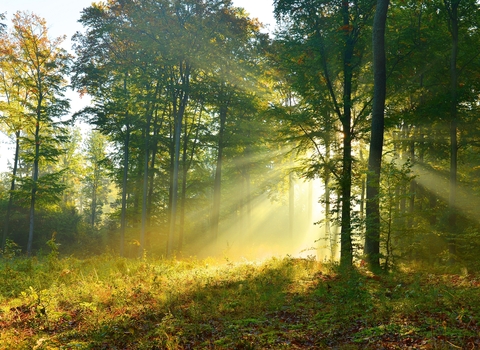The UK has a target of net zero greenhouse gas emissions by 2050.
Nature can make a massive contribution to achieving this, but only if we protect and restore our damaged ecosystems
At sea, and on the coast, seagrass and saltmarsh – huge sponges for carbon – are disappearing at an alarming rate. On land, and closer to home here in Warwickshire, woodland, peatland, wetland and grassland are carbon warriors, locking in billions of tonnes of carbon. Yet these habitats too are fragile, fragmented and at risk from human activities. In short, we are destroying our greatest ally against the climate crisis. Most of us want to see action to revive our planet and secure a healthy future. Yes, we face major threats, but it is within our power to repair and restore, and nature can help.
Problems and solutions
We know that only 13% of Warwickshire, Coventry and Solihull is protected for nature, and less is in a good state. Our local ecosystems are capable of providing the solution to many of the problems facing our communities today, but to be able to help us they need to be resilient, healthy, connected and protected. Over the next 10 years, the Trust is aiming to double the amount of land that we manage for nature. What we do with this land could help to unlock the challenges presented by environmental crises, and we can do this by working hand in hand with nature. Degraded habitats across the region could absorb around a third of our CO2 emissions if they were to be expertly restored, as well as enhancing public health and well-being.
Flood Protection
Climate change means we are having to cope with more extreme weather. We’re seeing more floods, droughts and fires around the world and close to home. To protect our future, we must take practical action on the ground to tackle climate change. Our rivers are a thing of beauty, however for some Coventry residents their local river is a cause for anxiety. In 2019, water levels at the River Sherbourne reached their highest in three years and the river burst its banks, causing flooding across the village of Allesley. Healthy habitats can slow, store and filter water, reducing the risk of flooding downstream. Working with local landowners on river catchments such as the Upper Sherbourne, the Trust is installing interventions to slow the flow and retain water in the landscape. These measures can be as simple as building a ‘leaky dam’ in a river, or creating a ‘shallow dish’ in the land to hold water during times of heavy rain.
Carbon Capture
Our local habitats can become long-term carbon stores if they are allowed to function well. Tree planting is often cited as the obvious solution, but only if the right trees are planted in the right places. Warwickshire holds huge opportunity for us to make an impact to a variety of ecosystems, including the restoration of grasslands, hedgerows, wetlands and heathlands, which are all just as important for carbon storage as planting trees. Tens of thousands of hedgerows were removed from the mid-20th century onwards as a result of grants aimed at increasing agricultural efficiency. This was a catastrophic blow for nature, as these living corridors store carbon and connect habitats across the landscape. Through our Dunsmore Living Landscape we have planted and restored 15km of hedgerow over the last 4 years, which will not only capture local emissions but support the wildlife that call hedgerows home. Increasing our hedgerows could further our efforts to help rare species like the dormouse and the brown hairstreak butterfly to recover. We need 40% more hedgerows to help reach net zero by 2050 and the Nature Recovery Fund will help us to continue to create and restore these vital green corridors.
Healthier Lives
Wild places not only provide natural solutions to climate change, but evidence shows that spending time in nature improves our mental wellbeing and physical health. Coventry City Council’s Greenspace Strategy (2019-2024), tells us that greenspaces are important for Coventry residents, with surveys finding that nine in ten people agree that they enhance their health and wellbeing and have a positive impact on the local community. However, in some areas of our county, access to greenspace is far from equal and the New Economics Foundation’s mapping tool shows greenspace deprivation to be high in Coventry. Our wellbeing projects support local people with their mental health by offering opportunities to connect with nature. By increasing the amount of land that we manage as a Trust, we will be creating brand new greenspaces for communities across Warwickshire, Coventry and Solihull.
How can you help?
You can help us to deliver nature based solutions across the county by donating to our appeal. Our target of £3million will get us off to a flying start, meaning the Trust can work towards managing 2,000 hectares for nature. To achieve the all important 30% of land for nature’s recovery we need to work in partnership with others to deliver nature based solutions on their land, so we continue to call on members to use their networks to help us to identify opportunities to do this.

